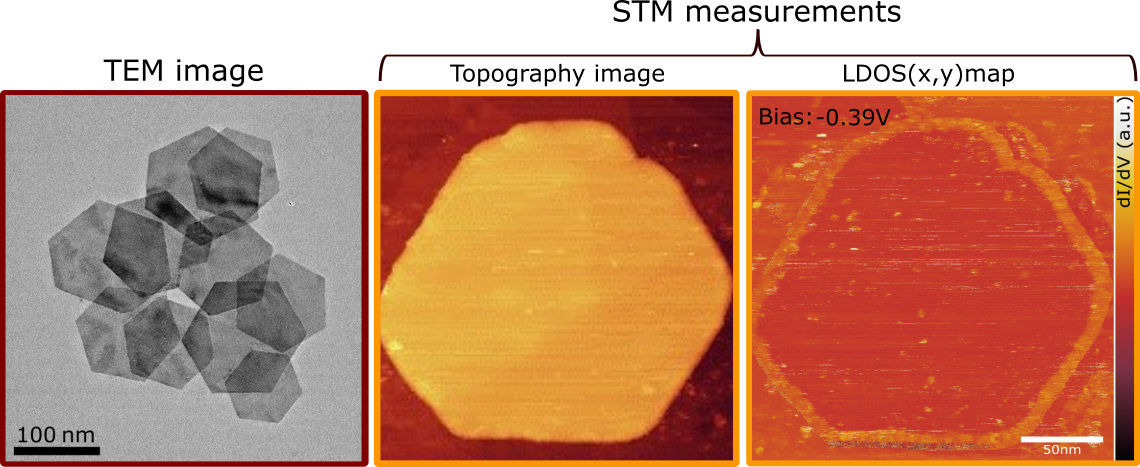Affiliated project
Synthesis and Characterization of Colloidal Topological Insulators
Topological insulators (TIs) are bulk insulators that host conductive states at their surface (in the case of 3D materials) or edge (for 2D materials). The emergence of these states is related to the material’s electronic band structure, where an inversion of the conduction and valence bands occurs due to strong spin-orbit coupling. Consequently, the conductive states retain their metallic character despite the presence of crystal disorder or impurities. This robustness, combined with exotic effects such as spin-filtering, results in TIs being regarded as intriguing materials for material science, nanoelectronics, and spintronics.[1]
Of the known TIs, Bi2Se3 is one of the most widely researched materials.[2,3] However, reports on the electronic properties of Bi2Se3 nanoplatelets (NPLs) are surprisingly scarce. Because of their small size, NPLs provide a unique opportunity to study the effects of quantum confinement on the NPLs’ opto-electronic properties. We therefore aim to synthesize colloidal Bi2Se3 NPLs and investigate their properties using transient absorption spectroscopy, conductivity measurements, and scanning tunneling spectroscopy/microscopy (STS/STM). In Figure 1, a TEM image of several Bi2Se3 NPLs is shown. The LDOS(x,y) map of one platelet, also shown in Figure 1, shows that the edge states of these NPLs can be visualized with STM.
In addition to synthesizing Bi2Se3 NPLs, we aim to develop new synthesis routes for colloidal topological crystalline insulators (TCIs). TCIs constitute a subclass of TIs in which the surface conductivity is protected by the point group symmetry of the crystal. Currently, we are using cation exchange and one-pot synthesis techniques to prepare SnTe NPLs and nanocrystals of Pb1-xSnxTe with tunable dimensions.

Figure 1:
TEM image of hexagonal Bi2Se3 NPLs, and STM measurements on a single NPL showing the topography image and the LDOS(x,y) map obtained at a sample bias of -0.39V.
References:
[1] Ramirez, Arthur P., and Skinner, Brian, Physics Today 73, 30-36 (2020)
[2] Zhang, Haijun, et al. Nature physics 5.6, 438-442 (2009)
[3] Zhang, Yi et al., Nature Physics 6, 584-588 (2010)